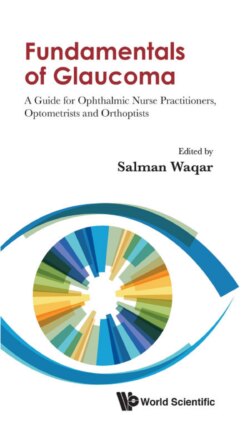Читать книгу Fundamentals Of Glaucoma: A Guide For Ophthalmic Nurse Practitioners, Optometrists And Orthoptists - Группа авторов - Страница 20
Secondary Open Angle Glaucoma
ОглавлениеThis may be classified based on the site of the anatomical abnormality causing raised intraocular pressure as follows:
•Trabecular Secondary Open Angle Glaucoma
This is caused by dysfunction of the trabeculum. The trabecular meshwork may be obstructed by deposited material such as pseudoexfoliation, pigment from pigment dispersion or lens protein from phacolytic glaucoma.
Pseudoexfoliation glaucoma is an important diagnosis to make for both prognostic reasons and for surgical planning. The signs and symptoms are discussed in the clinical examination chapter. A fine filamentous deposit is lain down on the internal structures of the eye. This clogs the trabecular meshwork and weakens the zonular fibres.
The trabeculum can become inflamed especially in herpetic disease (Herpes zoster) or in Posner-Schlossman syndrome. These conditions usually respond well to administration of topical steroids.
The trabeculum can become dysfunctional due to the administration of steroids, either topically or systemically. This causes a secondary pressure increase and may result in glaucomatous nerve damage if left untreated. Patients with POAG appear to be more sensitive to developing steroid-response pressure rises.
•Post-trabecular Secondary Open Angle Glaucoma
Increased episcleral venous pressure causes increased intraocular pressure. If the pressure is too high for too long, ganglion cell damage can occur. Examples of diseases causing raised episcleral venous pressure are: carotid-cavernous fistula, dysthyroid orbitopathy and Sturge-Weber Syndrome. If the underlying causative pathology can be treated, the IOP can normalize, and glaucomatous field damage progression can be halted.
